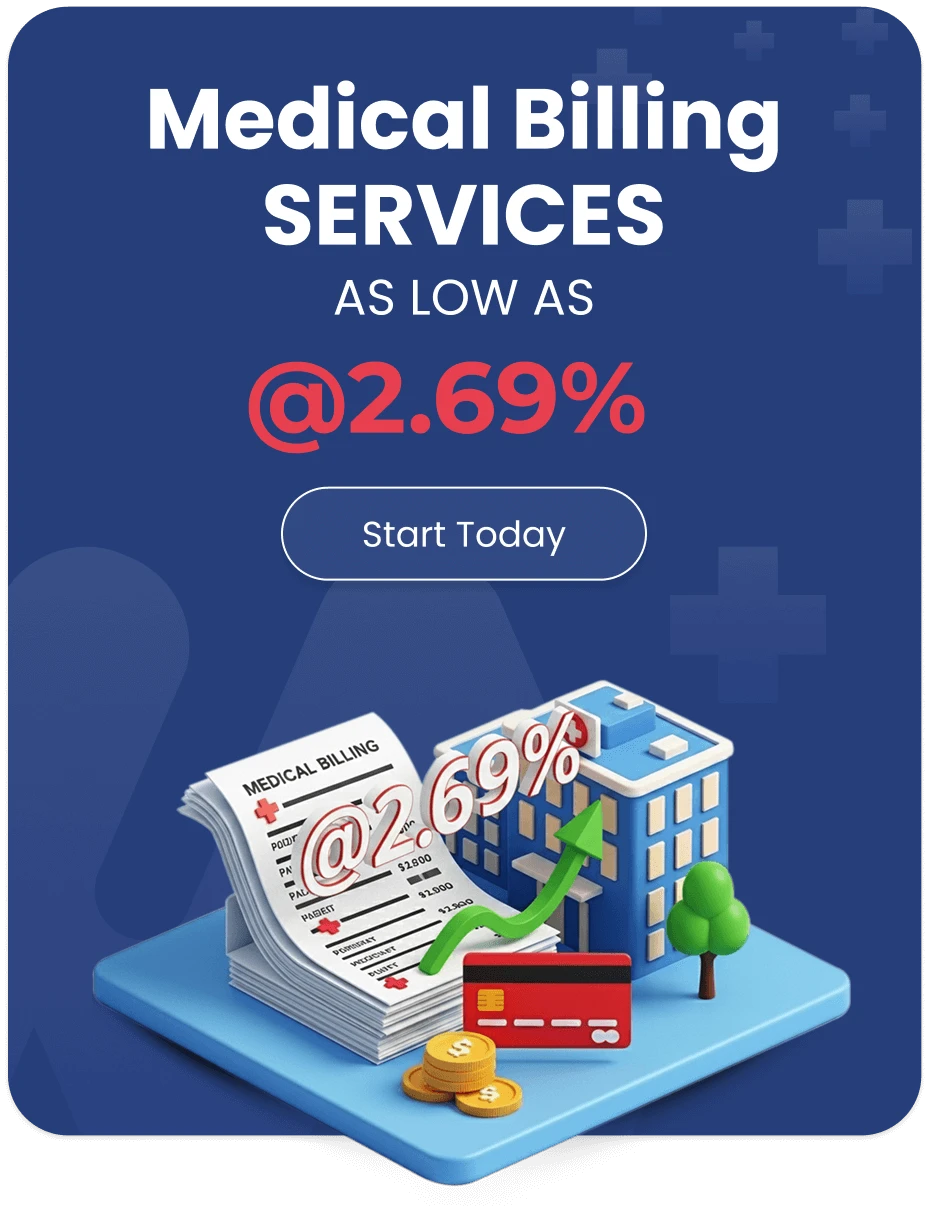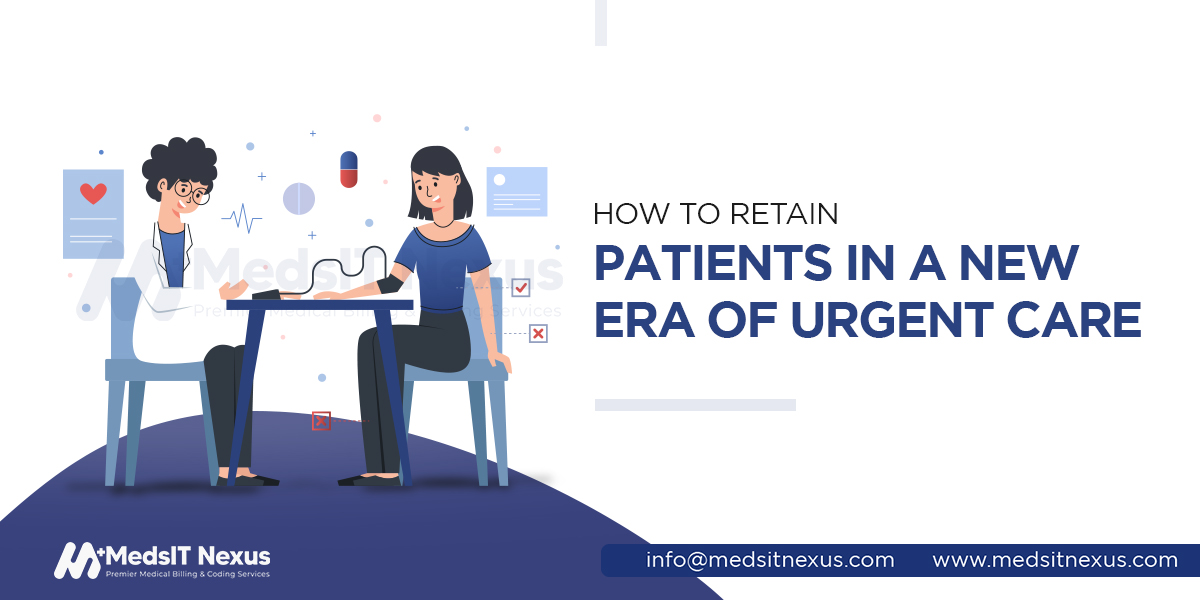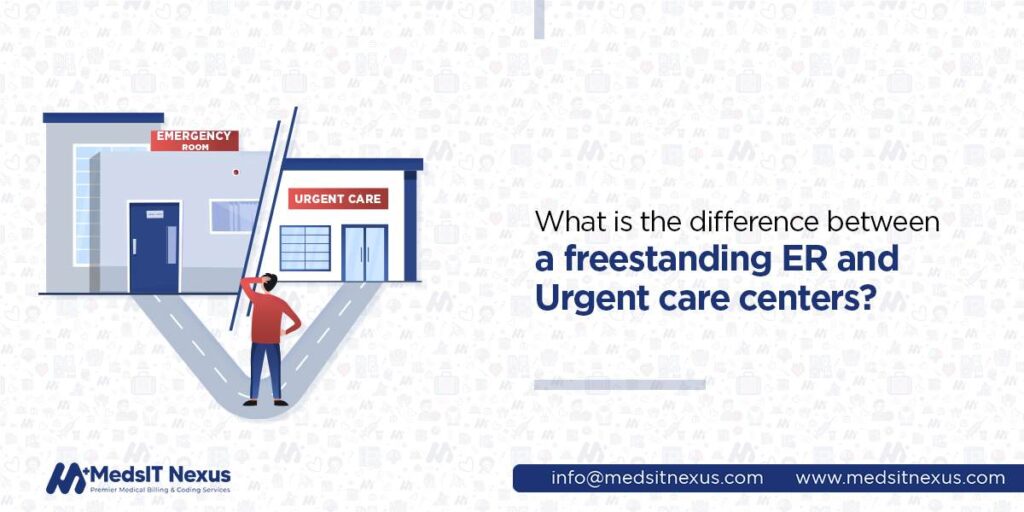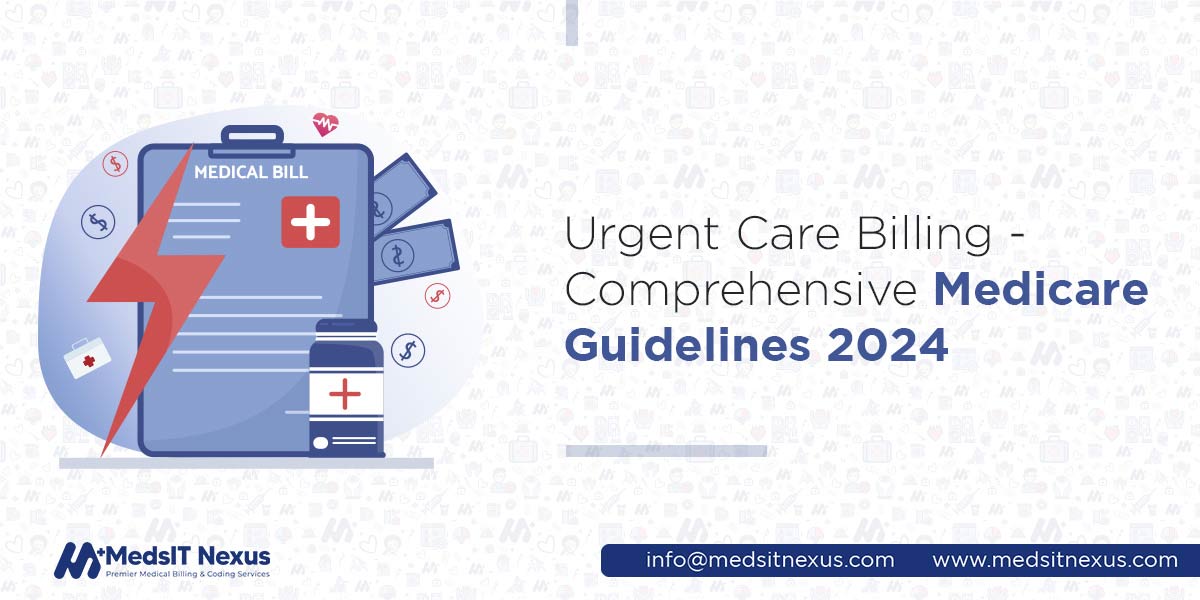Urgent care revenue cycle management
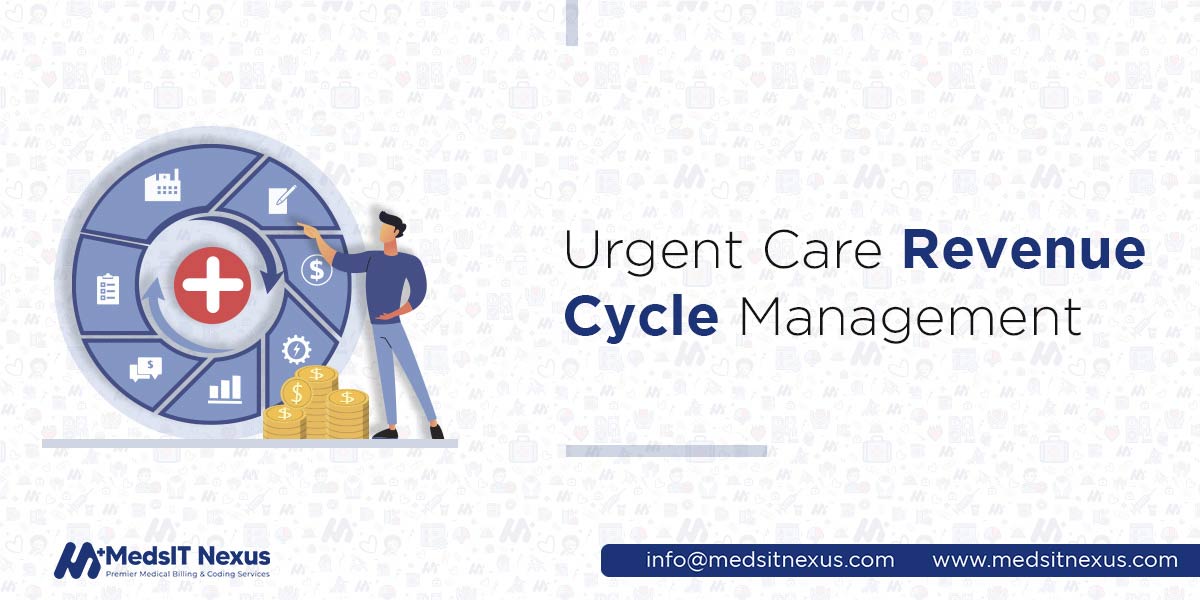
Urgent Care clinics face the challenge of balancing personalized patient care with complex reimbursement
plans and ever-changing regulations in the fast-evolving landscape of value-based care. Amidst the
dedication to delivering individualized attention to walk-in patients, time constraints often lead to
overlooked revenue management and administrative tasks. This oversight can significantly impact the
clinic's core functions. Recognizing the importance of streamlined financial management, it becomes
imperative for urgent care clinicians to seek innovative solutions.
In this dynamic scenario, partnering with specialized medical billing companies emerges as a strategic
move. Entrusting the intricate responsibilities of revenue cycle management to these professionals
relieves clinicians of the burden and ensures that the clinic's financial health thrives. By leveraging
the knowledge and expertise of these billing experts, Urgent Care clinics can focus wholeheartedly on
their primary goal – providing exceptional and personalized care to every patient who walks through
their doors.
Understanding Urgent Care Revenue Cycle Management
Urgent Care Revenue Cycle Management refers to the process of managing the administrative and financial aspects of an urgent care facility, right from patient registration and insurance verification to claims processing and revenue generation, culminating in the facility getting reimbursement for the rendered services. Revenue cycle management in urgent care involves the financial procedures and strategies to handle and recover patient service fees within urgent care facilities.
Key Components & steps of Urgent Care RCM: Urgent care RCM services
Patient Registration
The process begins with accurate patient pre-registration, where demographic information (name, age, gender, address, date of birth, phone number), insurance details (like insurer’s name, insurer’s number, insurance policy number), and medical history are collected. Implementing advanced software solutions can aid in error reduction and enhance data accuracy.
Insurance verification & confirming copay
One of the foundational pillars of Urgent Care RCM is insurance verification. Before providing any
medical services, healthcare providers must accurately verify patients' insurance information. This
process involves validating the patient's coverage, policy details, and eligibility for urgent care
services.
Different ways for insurance verification
- One enduring method involves directly contacting the payer via telephone to confirm eligibility, a practice that remains prevalent today.
- Faxes are vital in connecting with payers facilitating essential communication within the healthcare industry.
- The evolution of technology has led to the development of self-service portals by numerous payers. Hospitals can input necessary data into these portals to promptly retrieve relevant reports, streamlining the verification process efficiently.
- In recent times, the healthcare sector has witnessed the emergence of cutting-edge solutions, notably the automated insurance verification process. This innovative approach represents the pinnacle of efficiency and automating the verification procedures.
Any copayment must be clearly discussed with the patient to avoid revenue loss. A copayment, commonly known as a copay, is a fixed out-of-pocket cost that an insured individual must pay for healthcare services or additional drugs or tests. Clear and transparent communication with patients regarding their financial responsibilities fosters transparency and helps collect payments promptly, reducing accounts receivable and enhancing cash flow.
Documentation
Skilled RCM crew implement the rule of "if a service is not documented, it had never been rendered to
the patient," and hence they document every detail, such as diagnosis, treatment, lab test, etc, to
apply codes appropriately. This step is required to generate claims to get reimbursement from insurers.
Proper documentation of diagnoses and procedures supports correct coding, minimizing the risk of denials
and audits.
Tips for concise documentation
- Avoid abbreviations and acronyms or slang wording.
- Use standard medical terminology.
- Include all necessary details related to the patient's services.
- Use clear language to convey information.
Coding
Skilled coders translate healthcare services into standardized codes, ensuring compliance with regulatory guidelines. Two types of codes are used in urgent care coding:
- HCPCS codes/"S" codes, which are S9083 and S9088
- CPT codes for new patients (99202, 99203, 99204, 99205) and established patients (99213, 99214, 99215)
It is important to note that accurate coding in urgent care may require the use of modifiers (25, 95, 59) to show any additional services.
Charge capture
Charges must be accurately captured for all services rendered, including diagnostic tests, procedures, and consultations. Timely and precise billing, utilizing appropriate codes, leads to prompt claim submission, reducing the billing cycle and accelerating revenue flow.
Claims Transmission
Submitting claims promptly is fundamental in RCM. Claims should be thoroughly reviewed to avoid errors before submission. Clearinghouses play a crucial role in electronically transmitting claims to third-party payers. These transactions are followed by generating reports, serving as a vigilant mechanism. These reports promptly alert the practice if any claims face rejection from the payers. Immediate action is imperative upon such rejections. In cases where errors stem from data entry or exhibit recurring patterns, informing staff members of these errors becomes pivotal. Simultaneously, proactive steps are taken to implement robust processes, preventing similar errors in the future.
Adjudication
The adjudication process involves the evaluation of insurance claims by payers. After the urgent care center submits a claim, payers assess it based on various factors, including the patient's policy, medical necessity, and adherence to coding guidelines. Efficient RCM necessitates a thorough understanding of the adjudication process, enabling providers to anticipate potential challenges and address them proactively.
Denial Management
Even with meticulous processes, claim denials are inevitable. Effective denial management involves analyzing denial patterns, identifying root causes, and implementing corrective measures. If a claim is rejected, the possible cause of rejection is figured out by the RCM team, and then it is resubmitted. AHIMA tells the reasons for the denials, which include:
- Incomplete or inaccurate insurance information
- Not capturing all of the procedures and tests
- Diagnoses and procedure coding errors or omissions
- A denial due to lack of meeting medical necessity
Lack of precertification or prior authorization
Past filing limits the submission of claims
Payment processing
After claims are adjudicated and approved, healthcare providers receive payments from insurance companies. It is imperative to have streamlined payment processing mechanisms in place to ensure the swift and accurate allocation of funds.
Financial Reporting and Analysis
Regular financial reporting and analysis provide valuable insights into the urgent care center's
financial health. Key performance indicators (KPIs) help evaluate revenue trends, identify bottlenecks,
and optimize workflows. Data-driven decisions based on comprehensive financial analysis are instrumental
in enhancing RCM efficiency.
Let's get into the details of those indicators involved in managing the revenue cycle of urgent care.
Revenue Cycle Metrics for Urgent Care: Financial Analysis
Determining revenue generated in urgent care settings primarily hinges on two key factors: patient volume and the reimbursement rate per individual.
Average Revenue Per Visit
Average revenue per visit (ARPV) is a crucial key performance indicator (KPI) in urgent care, serving as
a metric to gauge the average revenue generated per patient visit. This metric is calculated by dividing
the total revenue earned from all patients within a specific timeframe by the total number of patient
visits during that time.
ARPV= Total revenue/Total visits
Importance
ARPV offers invaluable insights into various facets of urgent care center management. It serves as a
barometer for the effectiveness of marketing initiatives, shedding light on their impact and reach.
Furthermore, ARPV is pivotal in enhancing the overall patient experience, enabling healthcare providers
to optimize their services and cater to patient needs more effectively. Additionally, this metric plays
a fundamental role in precise budgeting for future operations, ensuring financial prudence and
stability.
Moreover, ARPV aids in the meticulous calibration of service pricing. By gauging the revenue generated
against the number of patient visits, healthcare providers can ascertain the correct pricing structures
for their services.
E/M Code Distribution
E/M codes, denoting evaluation and management services play a crucial role in reflecting the complexity
of patient visits. These codes are instrumental in determining reimbursement levels by assessing the
nature of services rendered during a medical encounter.
Importance
The significance lies in the accurate distribution of E/M codes, serving as a critical indicator of
precise documentation practices. If a significant proportion of visits are categorized as level two, it
might suggest inadequate documentation. Conversely, excessive level four or five visits could raise
concerns about potential E/M upcoding. Monitoring and ensuring the appropriate assignment of E/M codes
is essential for maintaining integrity in medical billing practices.
Front Desk Collection Average
The "Front Desk Collection Average" is a key performance indicator (KPI) in urgent care facilities that
measures the average amount of money collected at the front desk during patient check-in or checkout
processes.
Importance
This metric is essential for evaluating the effectiveness of the front desk staff in collecting
payments, copayments, and outstanding balances directly from patients at the time of their visit.
Days in Accounts Receivable (A/R)
A/R days, indicative of the average time taken to receive payments, play a pivotal role in financial
stability. Delayed payments pose potential cash flow challenges and limit opportunities for strategic
investments and interest accrual. To calculate A/R days:
Determine the Average Daily Charge Amount: Find the average daily charge amount by dividing the total
gross charges generated over the past 12 months by 365 days. This figure represents the day-to-day
revenue generated by the medical practice.
Net the Credits: Calculate the net receivables by subtracting the current credit balance from the total
current receivables. This clearly shows the outstanding amount after accounting for credits or
adjustments.
Calculate the Number of Days in Accounts Receivable (A/R): Divide the net receivables by the previously
determined average daily charge amount. This calculation reveals the average number of days the medical
practice takes to receive payment for its services.
Percentage of Accounts Receivable Over 120 Days
The "Percentage of Accounts Receivable (A/R) Aging Beyond 120 Days" is a crucial indicator in revenue
cycle management for urgent care facilities. To calculate this metric, you would divide the aggregate
sum of accounts receivable aged beyond 120 days by the total outstanding accounts receivable,
subsequently multiplying the outcome by 100 to express the result as a percentage.
% of AR over 120 days= (Total A/R over 120 days / Total A/R outstanding) x 100
Importance
This metric holds significant importance as it assesses the proportion of outstanding accounts
receivable that have exceeded the 120-day mark. It effectively gauges the efficiency of the
organization's billing and collection processes.
Days to Bill
Timely processing insurance claims is crucial for maintaining a healthy cash flow in medical practices.
The duration it takes to submit a claim directly impacts accounts receivable, and extended delays in
reimbursement can arise from inadequacies in billing procedures, payer interactions, or staff
performance.
Importance
If it takes more than three days to bill a claim, it serves as a red flag indicating potential
inconsistencies in clinic protocols.
Visits Per Clinic Per Day
This indicator quantifies the volume of patients seeking immediate medical attention without prior
appointments, providing valuable insights for clinic management. To calculate the number of walk-in
patients per day, the total count of patients arriving at the clinic without prior appointments is
divided by the total operating hours for the day.
Visits per clinic per day = Total number of patients without appointments / Number of opening hours per
day
Importance
Vigilant monitoring of this KPI enables urgent care providers to optimize staffing levels and allocate
resources effectively, ensuring prompt and efficient healthcare services.
Ancillary Revenue Per Visit
"Ancillary Revenue Per Visit" is a key performance indicator (KPI) used in urgent care facilities to
measure the additional revenue generated from services or products supplementary to the primary medical
care provided during a patient visit.
Importance
This KPI helps urgent care facilities assess their ability to maximize revenue by offering and
efficiently delivering ancillary services while maintaining the quality of patient care. It can also
indicate opportunities for improving revenue streams by optimizing the provision of ancillary services
or adjusting pricing strategies.
Challenges in Urgent Care Revenue Management
In recent times, the financial health of Urgent Care clinics has been a cause for concern, with profit margins experiencing a significant decline. According to a recent survey conducted among members of the Urgent Care Association a notable trend has emerged where numerous Urgent Care centers are facing either a state of stagnation or a reduction in reimbursement rates provided by insurance companies. The extent of this decrease in reimbursement rates appears to vary significantly, with some facilities reporting a substantial decline while others have noted a gradual, albeit persistent, decline over time. This decline cannot be solely attributed to the inevitable rise in overhead costs, which have been relatively stable. Instead, the alarming decrease in profit margins can be traced back to deficiencies in revenue cycle management practices. These inefficiencies have created a challenging situation, impacting the clinic's ability to sustain its financial well-being effectively.
Front desk challenges
A recently released study by the Healthcare Financial Management Association (HFMA) highlights a
significant challenge hospital billing offices face. According to the report, approximately 80 percent
of their time is consumed by rework in medical revenue cycle management. This substantial portion of
their efforts addresses errors and oversights, primarily originating from the front-end processes.
Prior Authorization:
Immediate medical attention is crucial in urgent care situations, often necessitating rapid
decision-making by healthcare providers. Within this tight timeframe, verifying insurance information,
confirming coverage, and determining patient eligibility are essential yet challenging tasks.
Unfortunately, the situation's urgency often leaves little time for proper pre-authorization procedures.
This can result in denied or rejected insurance claims, leading to delayed or reduced payments and
ultimately affecting the healthcare facility's revenue stream and reimbursement rates.
Upcoding or downcoding:
In urgent care billing, challenges often arise in the form of upcoding and downcoding practices and are
considered scams. Upcoding refers to the unethical act of billing for a service at a higher level than
what was provided, potentially leading to allegations of fraud and abuse. On the flip side, downcoding
involves billing for a service at a lower level than the one delivered, which can result in reduced
reimbursement for healthcare facilities, such as urgent care centers. These practices pose ethical
concerns and financial risks, making it imperative for healthcare providers to uphold the highest
standards of accuracy and integrity in their billing processes.
Keeping Accounts Receivable (AR) Days to the Minimum
Ideally, most claims should be processed within fewer than 50 days. Any claims aging beyond 50 days, especially those reaching 90 or 120 days, warrant immediate attention and follow-up to expedite payment. While it is crucial for urgent care facilities to minimize AR days, several challenges they face in achieving this goal must be identified and addressed.
Compliance & Regulations
Protecting Patient Health Information (PHI) or Patient Medical Information (PMI) is not easy because data may be breached anytime from anywhere if necessary precautions are not implemented. Not adhering to privacy rules or insurers' guidelines will be considered a scam, and urgent care organizations will be required to pay heavy penalties of fines, reputation, or even jail.
Medicare coverage
Medicare Part B, which falls under Medical Insurance, extends coverage to urgently required medical services to treat abrupt illnesses or injuries that do not constitute a medical emergency. Notably, approximately 80% of expenses related to urgent care services are eligible for reimbursement through Medicare Part B, and patients pay the rest of the 20%. However, patients who are not insured must be communicated about their self-payment process and cost to avoid confusion. Urgent care providers need to coordinate with Medicaid or Medicare to get information, which frequently becomes challenging.
7 Strategies for Effective Urgent Care Revenue Cycle Management
Price Transparency
Providing patients with clear and transparent pricing information before they receive services is essential. Patients appreciate knowing what to expect in terms of costs. Clearly communicated service prices, co-pays, and deductibles can prevent misunderstandings and disputes, leading to more prompt payments.
Use technology to your advantage Revenue Cycle Management Software
In this digital age, electronic filing of medical claims becomes the virtuoso performance, where
precision and efficiency intertwine, creating a seamless rhythm in revenue cycle management.
Implementing robust Revenue Cycle Management (RCM) software and HER can streamline billing processes,
automate tasks, and improve accuracy. These systems can help process claims, post payments, and track
accounts receivable. Utilizing technology also enables data analysis, allowing you to identify trends,
potential issues, and areas for improvement in your revenue cycle.
Benefits of EHR in urgent care billing
- Electronic Health Records (EHRs) streamline the billing process by automating various tasks, eliminating the need for manual intervention, saving time, and reducing the likelihood of errors.
- Standardizing data within EHRs entails the meticulous organization of information consistently and uniformly. This ensures that patient particulars and billing codes adhere to a standard format and set of rules, promoting accuracy and coherence in record-keeping.
- Centralization of data in EHRs entails storing essential billing information in a centralized digital database. This eliminates the challenges posed by scattered paper records and disparate systems.
Adhere to Privacy Standards
Seamless integration of your revenue cycle management system with the Healthcare Information Portability
and Accountability Act of 1996 (HIPAA) is not just a best practice but a lifeline for your urgent care
department. HIPAA, the cornerstone of patient data protection, mandates several essential measures:
Standardized Codes: Accurate and standardized coding is fundamental, ensuring patient
data is uniformly organized and easily interpretable.
Regular Compliance Audits: Periodic internal audits are vital to assess your facility's
adherence to HIPAA guidelines, proactively identifying and rectifying potential vulnerabilities.
Electronic Filing of Claims: Embracing electronic methods for filing claims enhances
efficiency and reduces the risk associated with paper-based systems.
Secure Workstations: Implementing foolproof workstations means creating a safe
environment where sensitive patient information is accessed, processed, and stored, mitigating the risk
of unauthorized access.
Restricted Access Control: Limiting access to medical records strictly to authorized
personnel on a need-to-know basis ensures that patient data remains confidential and is only accessible
by those involved in the patient’s care.
Password-Protected Access: Implementing robust password protection mechanisms for both
software and online coding platforms adds an additional layer of security, safeguarding patient
information from unauthorized users.
As a dedicated healthcare provider, it is your ethical and legal responsibility to uphold the security,
privacy, and confidentiality of Protected Health Information (PHI). By adhering meticulously to all
mandated protocols and guidelines outlined by HIPAA, you ensure the integrity of your urgent care
practice and demonstrate your commitment to the highest standards of patient care and data protection.
Establish a proactive engagement approach
Engaging patients and payers proactively can prevent revenue cycle issues. This includes verifying insurance information before appointments, communicating clearly about payment expectations, and following up promptly on any denied claims or unpaid bills. Proactive communication can prevent misunderstandings and improve the likelihood of timely payments.
Offer multiple payment options
Providing various payment options, such as online payments, credit card payments, payment plans, or electronic funds transfers, can cater to the diverse preferences of patients. This flexibility increases the likelihood of patients settling their bills promptly, improving your cash flow.
Regular Performance Analysis and Process Optimization
Conduct regular financial audits and performance analyses to identify bottlenecks and inefficiencies. Continuously optimize RCM processes based on data-driven insights, industry best practices, and changing regulations. Stay updated with healthcare laws and regulations to ensure compliance, avoiding penalties and revenue loss.
Outsource your RCM team
Outsourcing your revenue cycle management to specialized companies can be highly efficient. These firms have expertise in billing and coding, staying updated with the latest regulations, and can often recover more revenue than an in-house team. It also allows your in-house staff to focus on providing excellent patient care. For this purpose, outsource your urgent care revenue cycle services to MedsIT Nexus, as MedsIT is a reliable partner for increasing reimbursement.
What services is MedsIT Nexus offering for streamlining urgent care facility’s revenue?
MedsIT Nexus urgent care billing services encompass all the necessary services for smooth and streamlined RCM, from patient registration verification to real-time insurance verification to receiving payment. We offer updated and latest technology services that adhere to HIPAA rules to protect PHI. Besides, our certified and experienced coders and billers cross-check every detail of every step to help you avoid claim denials and implement strategies and KPIs to minimize your AR days to increase your reimbursement. So, contact us today and explore more benefits from our company.
Samuel White, MBA-HC, CPAR -
Lead Author & Senior Healthcare Revenue Cycle Strategist at MedsIT Nexus
Leads editorial process for the publication of Technical RCM guides, reimbursement optimization case studies, and compliance-focused research content, expert evaluations of RCM software and medical billing solutions.


